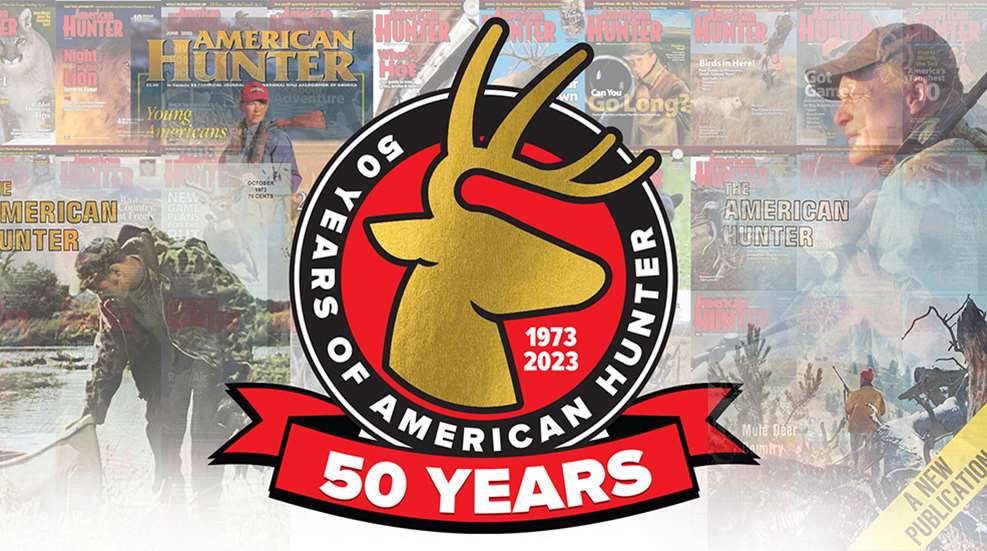
A new magazine devoted to hunting helped to double NRA membership at a critical time.
It was not a rash decision when NRA launched American Hunter magazine in the summer of 1973. For a century, the American Rifleman member publication and earlier affiliate titles included hunting articles. They often amplified the ideals of conservation, fair-chase ethics and scientific wildlife management, but also featured firsthand accounts of hunt adventures from across the nation and around the world. It was great reading then, and, in my opinion, still is.
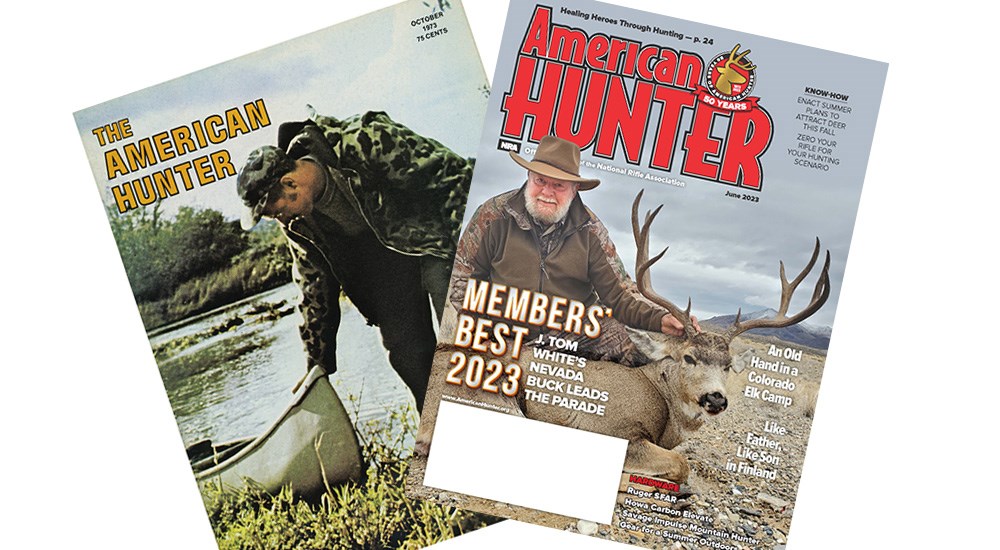
Even so, the hunting coverage was sporadic and all but vanished during wartimes when the focus zeroed in on training for both soldiers and citizens as well as the latest arms for the troops. But as legions of returning soldiers took up hunting in post-war periods, the subject matter returned. And with it came NRA’s clearest signal on hunting, as it began studying hunting accidents in preparation for working with state agencies to ensure all hunters could receive firearm safety training. It was an echo of the monumental role long filled by NRA in training Americans to contribute to our national defense.
As more hunters than ever took to the woods, “NRA training” became synonymous with safety. Along with those successful, life-saving efforts, NRA spoke out on hunting issues like the 1972 Marine Mammal Protection Act, launched the Leatherstocking Awards for North American big game, and published impressive resources like the 264-page NRA Guidebook For Hunters, followed by the 160-page 1973 NRA Hunting Annual. From there, the concept of a monthly hunting magazine was hardly a leap.
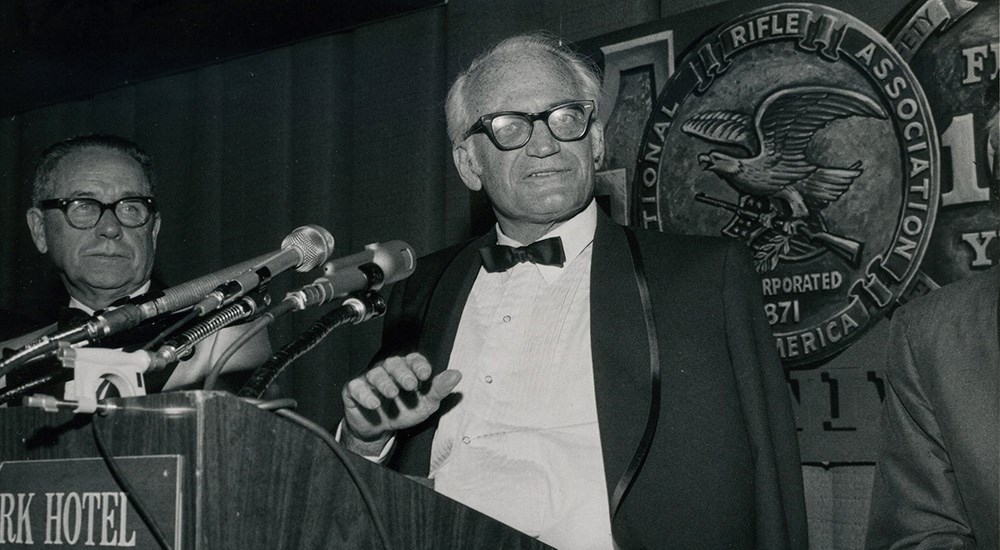 In the face of gun-control frenzy in the 1970s, NRA allied with leaders like Sen. Barry Goldwater, and boldly sought new members via a magazine focused on hunting.
In the face of gun-control frenzy in the 1970s, NRA allied with leaders like Sen. Barry Goldwater, and boldly sought new members via a magazine focused on hunting.
Keep in mind, all this occurred during a perilous turning point for the NRA. Following historic street violence and a string of shocking political assassinations that spurred the federal Gun Control Act of 1968, opportunistic politicians were agitating for even more drastic controls on gun ownership. Realists in the NRA knew the only hope for preserving freedom was to grow and grow fast.
Could American hunters help account for that growth? The American Hunter (AH) magazine was announced in the spring of 1973, then materialized as a 16-page insert in July’s American Rifleman. Alongside was a prepaid mailer offering annual subscriptions for just $5. To break even, the Hunter would have to attract 50,000 subscribers practically overnight, however when the first issue mailed in October 1973, the announced circulation was 70,000! The 100,000 milestone was passed inside a year, and in 1978 the NRA Board voted to make AH an NRA Official Journal, thus allowing members to receive it as their association benefit and lifeline. In less than a decade, members opting to receive AH would exceed 1 million, and ever since, it has been the world’s largest magazine devoted purely to hunting. Notably, that growth didn’t come at the expense of American Rifleman. Along the way NRA doubled in size to more than 2 million membership.
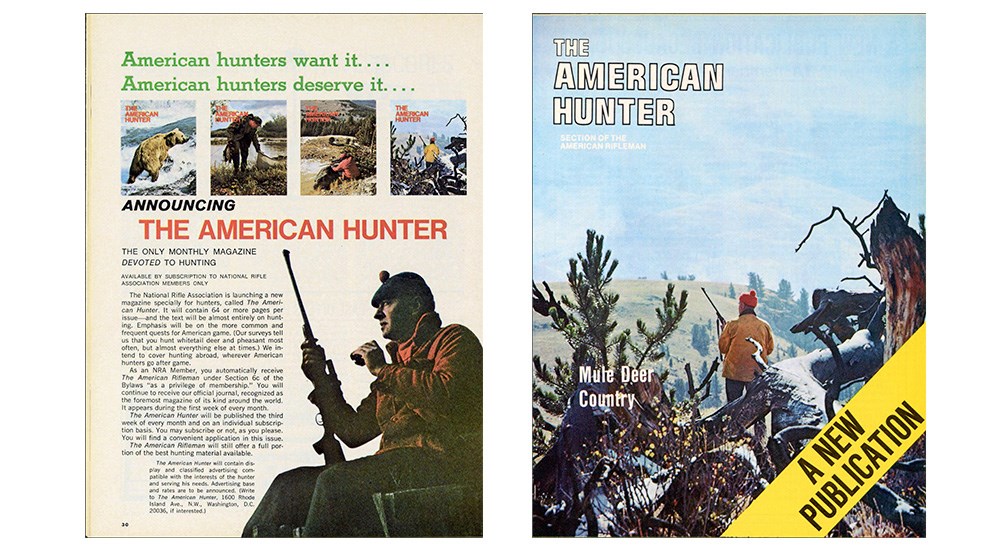 The announcement predicted, “American hunters want it … ,” and while the magazine’s articles and artwork have evolved over a half-century, your support has never wavered.
The announcement predicted, “American hunters want it … ,” and while the magazine’s articles and artwork have evolved over a half-century, your support has never wavered.
American Hunter represented a big shift for a century-old organization that had always excelled in its own conservative way. It was a decisive and necessary step toward a new NRA.
Serving Members, Protecting Rights
NRA magazines’ priorities don’t end with the core content no matter how well they cover shooting, guns, hunting and related subjects. In addition, members count on their monthly editions for a variety of important news. Foremost are alerts on the NRA’s mission to preserve Americans’ firearm freedoms, followed by notices about Association events, programs and business affairs. There’s a service aspect that you don’t find in competing commercial magazines, an accountability to the folks with real skin in the game.
In fact the sense of service integrates with the editorial focus. Right from its premier issue, American Hunter has stepped up in many ways, though largely in support of a singular objective: to ensure the future of hunting in America. Even back in 1973, hunting was under high-profile attack. As such the editors have known they must wage cultural battles on two fronts, for hunting rights as well as for gun rights.
One strategy has been to enlist more hunters. Since hunting was traditionally a man’s activity, encouraging women was an obvious opportunity. “The Outdoor Woman” department was part the inaugural mix, offering accounts from women who had taken the challenge along with advice on helping others get started. Before long, gifted women writers were contributing all sorts general-interest articles ranging from how-to tactics to adventures to reviews of guns and gear. Featuring women authors, as well as the efforts of editors Karen Mehall Phillips and Rose Bier Draper helped to normalize the emergence of women afield, currently a demographic bright spot as more than 2 million women regularly join the ranks.
A more recent development is the front-of-the-book column “Join the Hunt” which provides inspiration, methodology and energy for readers motivated to create new hunters in their communities.
American Hunter likewise strives to keep readers current on emerging threats. Around 1980, “Hunting—An American Tradition” became a full-spread fixture presenting thoughtful pro-hunting essays from resource agency professionals and other allies. The in-depth analysis on a range of matters helped to rally grassroots support. Naturally the magazine has served as the media component of NRA efforts to protect hunting with programs that led to the highly successful current outreach, NRA Hunters’ Leadership Forum (NRAHLF.org).
Founding editor Ken Warner got it half right when he promised “great writing” in his intro to American Hunter’s first issue in October 1973. In hindsight, I believe he should also have touted graphic design, since the two elements work inseparably to shape reader experience. And indeed, for 50 years the magazine has strived to marry the best of both.
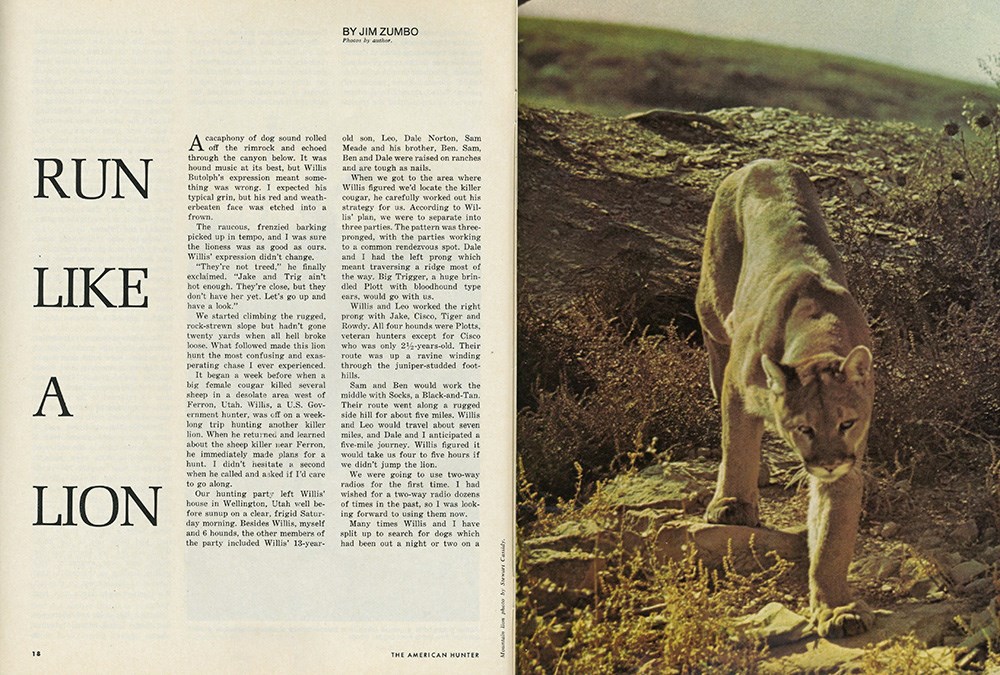 February 1974
February 1974
In fairness, 1970s magazine design and printing standards were mostly pretty bad. Fortunately change was coming, and once it took root, Hunter’s photos and layouts would quickly and steadily improve. Likewise I’m proud to say the writing has lived up to Ken’s vow. However neither was left to chance, as you’ll learn via the following recollections from my 40-year stint as an AH editor, writer and reader.
Designs on the Future
Best way to sell a new magazine? A full-page promo in the May ’73 American Rifleman “leaked” four prospective AH covers, including a big blonde grizzly and three hunters afield. It was a lineup that obviously scratched an itch. Nonetheless, the photo resolution—perhaps because of the printing—was extremely contrasty with nothing truly in focus. Also jarring is the absence of any text other than the small red nameplates in the upper left. Of course they were just mockups, so the lack of issue dates and blurbs teasing the content was understandable. However when real covers followed, the photography barely topped snapshot quality and the layouts remained mum about what readers might find inside.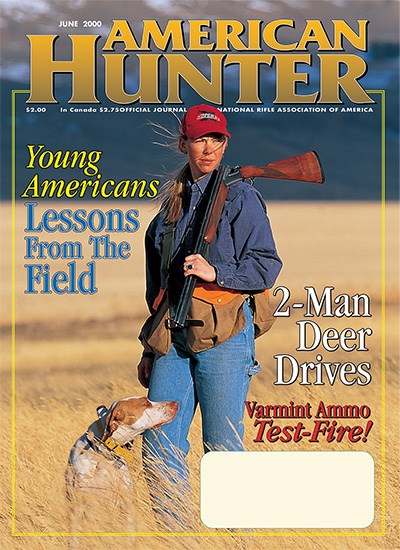
All that changed in the early 1980s as new NRA Publications Executive Director George Martin ushered in livelier covers that would prompt readers to pick it up, browse and remember. Then The American Hunter, the title banner was enlarged and redesigned in July 1978, joined a month later by the first coverlines. The name font was beefed up again when “The” was dropped in January 1982, and has since been updated a few more times.
Even more striking were January ’82’s photographs, whose subjects were now uniformly well exposed and in sharp focus. What had been a cover-to-cover shortcoming for nearly a decade, the biggest drawback in an otherwise first-rate package, was fixed.
My former colleagues Mike Sanford and Mark Weaver identified two reasons for the quantum leap seen from that point forward, and then stressed how a coming digital revolution in publishing and graphic design have continued to make us look our best.
“NRA invested a lot in its magazines,” stated Sanford, Deputy Executive Director of NRA Publications, who has borne responsibility for magazine production and printing for nearly 25 years. “Back then it was difficult to ‘hold’ color resolution because operators had to manually monitor and adjust inking as the presses were running—with three layers of color film plus black coming together [on the page], as the presses were running. There was a lot of room for error.”
 Digital publishing has ruled the day since NRA Publications’ first training session circa 1990.
Digital publishing has ruled the day since NRA Publications’ first training session circa 1990.
Creative Director Mark Weaver, whose hands-on work with AH goes back to 1997, contends that more and better tools also sparked the turnaround. “In the early years, photos mostly came from the writers, who weren’t professional photographers and likely didn’t have great equipment. In time, working with more sources, the designers gained access to much better photos.”
When I started in 1987, AH networked with at least 50 wildlife and hunting photographers, pros from across the country who supplied color slides and black-and-white prints that beautifully complemented the writing. But in little more than a decade that setup also became obsolete thanks to emerging digital solutions.
The advent of digital cameras was huge. Weaver recalled, “We immediately started getting better photos, from contributing writers, editors and even the professional photographers. Soon our ability to hold focus while enlarging digital images beat trying to ‘blow-up’ images on film.”
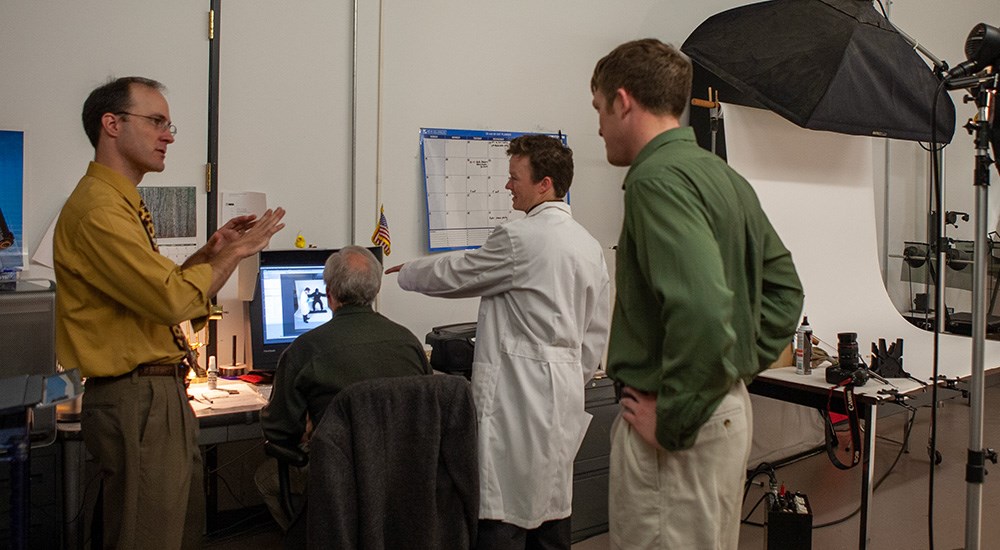 Creative director Mark Weaver and editors Jeff Johnston and Kyle Wintersteen huddle around then-photo chief Lloyd Hill to preview images for an upcoming article.
Creative director Mark Weaver and editors Jeff Johnston and Kyle Wintersteen huddle around then-photo chief Lloyd Hill to preview images for an upcoming article.
According to Weaver, rapidly evolving graphic design hardware and software streamlined big jobs like typesetting and pasteup as well as creative touches like illustrated headlines, drop shadows and other elements formerly done by hand.
Sanford echoed those thoughts. “Digital processes in printing really took off in the early 2000s. Color correction before going to press greatly benefitted us. Instead of pressmen making adjustments from sight checks, it was controlled through scanners with readouts showing ink percentages,” he explained. “Also the individual ink dots became more defined, which resulted in higher photo resolution.”
And in a complementary move, NRA Publications’ budget was raised to allow “run of press color,” that is, eliminating black-and-white photos in favor of color photography throughout the book. Though we’re convinced good design—like ours—is timeless, there’s nothing old school about what you’ll see in AH.
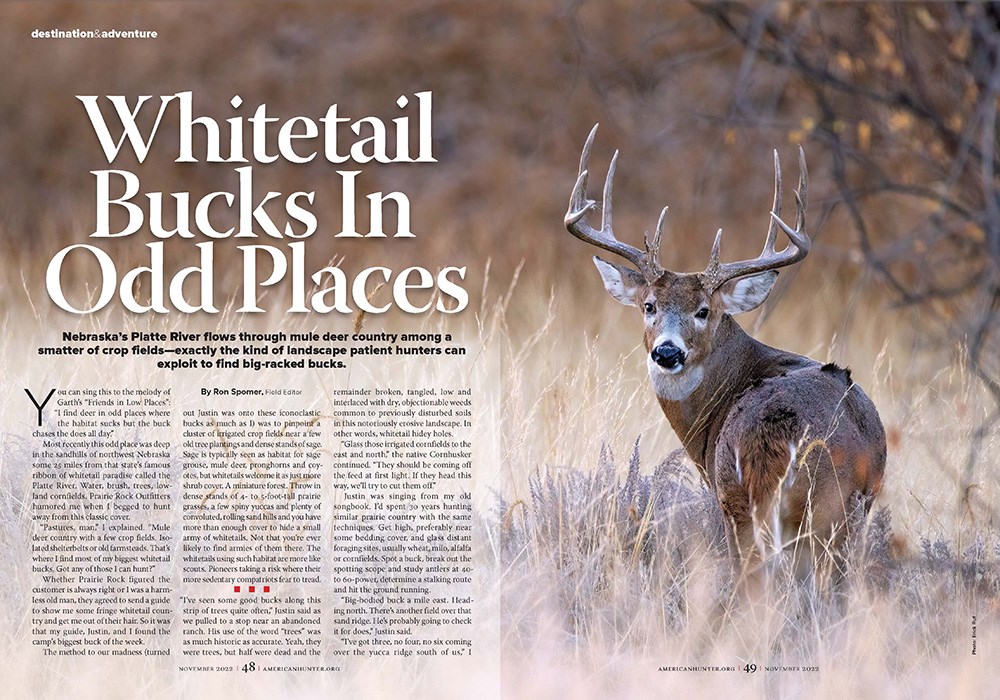
Now more than ever, AH readers can marvel at imagery of heavy antlers, an all-seeing eye of a turkey gobbler, a hunter’s hard-earned satisfaction—scenes cherished by an audience that lives for such things. Big bucks, big bulls and longbeard toms are regular fixtures, but the mix also feeds aspirations—perhaps a full-curl ram, a flight of pintails or an iconic African beast. Editors know too that readers appreciate inspiration and the unexpected. A personal favorite gracing the June 2000 cover featured a young woman afield with shotgun and pointer. It wasn’t lost on us that she broke the mold, that female faces were rare, nearly unheard of, in our category. However Weaver and I selected that image only because it was the best fit for our cover story on youth hunting.
Great Writers Add Up to Great Writing
Gifted writers whose work pushed American Hunter to the top and have kept it there fall into four distinct groups. Though unable to single out all of our valued contributors, we simply must remember some of them.
• Established pros include authors who’d already made a name and were active across the shooting and hunting genre. Early on, almost all AH contributors fit that description. Perhaps unfamiliar nowadays, fellows such as Tom Brakefield (Western big game), Bob Hagel (shooting and reloading), George Bird Evans (upland birds and gundogs) and Terence Underwood (dangerous game) brought overnight credibility to NRA’s fledgling journal. Another George Martin innovation was to contract marquee scribes for monthly installments, namely Russell Annabel, Charles Askins Jr., Peter Hathaway Capstick and Finn Aagaard.
In the 1980s-1990s AH often carried the work of diverse voices like Chuck Adams, Bill McRae, John Barsness, Tom Huggler, Larry Weishuhn and Tom McIntyre, and there’s been no letup in the 2000s due to the likes of Craig Boddington, Mark Kayser and Patrick Durkin.
• Up-and-comers have always been welcomed, and we’re proud to have been a springboard for some of the most successful outdoor media talent of the past 40 years. Did you know, for example, that TV star Jim Shockey got his first national exposure writing for American Hunter? That Jim Zumbo, Rick Jamison and Bob Milek all wrote for AH before going on to renown elsewhere? That Kathy Etling blazed a trail for women writers not by focusing on women’s hunting but because her practical tips made readers better deer and turkey hunters? Or how about Bill Winke’s revealing analysis of whitetail behavior and hunter tactics? Bill came along at a time when demand for such know-how was rampant and helped us deliver the goods.
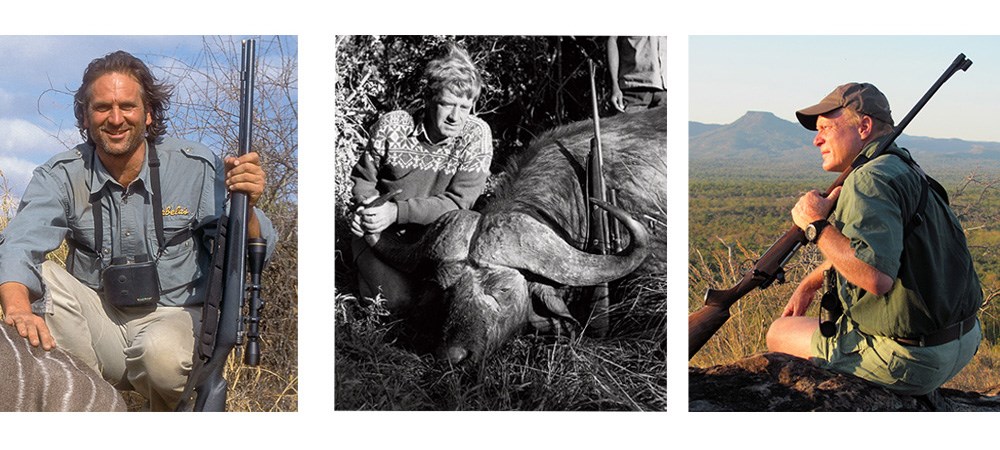 Since the first issue, the very best hunting writers have appeared in AH, trailblazers like, from left, Jim Shockey, Finn Aagaard and Craig Boddington.
Since the first issue, the very best hunting writers have appeared in AH, trailblazers like, from left, Jim Shockey, Finn Aagaard and Craig Boddington.
Several former editors advanced their careers via stints with AH then went on to thrive at other media outlets. Names you may recognize include Tom Gresham, Tom Fulgham, Michael Hanback, Doug Howlett, Frank Miniter, Jeff Johnston and Adam Heggenstaller.
• Legacy contributors comprise a small cadre who’ve been part of the AH roster for decades and are well known for their work here. Prime examples are long-time field editors Ron Spomer and Bryce Towsley. Since Ron’s first article ran in November 1982, he’s done it all. Coast-to-coast and around the globe, he’s covered nearly every kind of game and hunting method, guns and gear, conservation, new-hunter recruitment, and is unsurpassed on gundogs. Ron is also a skilled hunting and wildlife photographer. New Englander Bryce landed on these pages in 1999 and likewise is driven to hunt anything anywhere and invariably comes back with an entertaining tale. More than anything he’s a gun nut who keeps pace with new trends and technology, but remains appreciative of bygone models.
Rounding out the group are senior editors Scott Olmsted (since 1998), Karen Mehall Phillips (1997) and yours truly (1987). The three of us decided long ago that NRA Publications was home. Since then we’ve chipped in in myriad ways, with front-facing, bylined articles as well as the engrossing, behind-the-scenes chores critical to a production shop with monthly print and daily website deadlines.
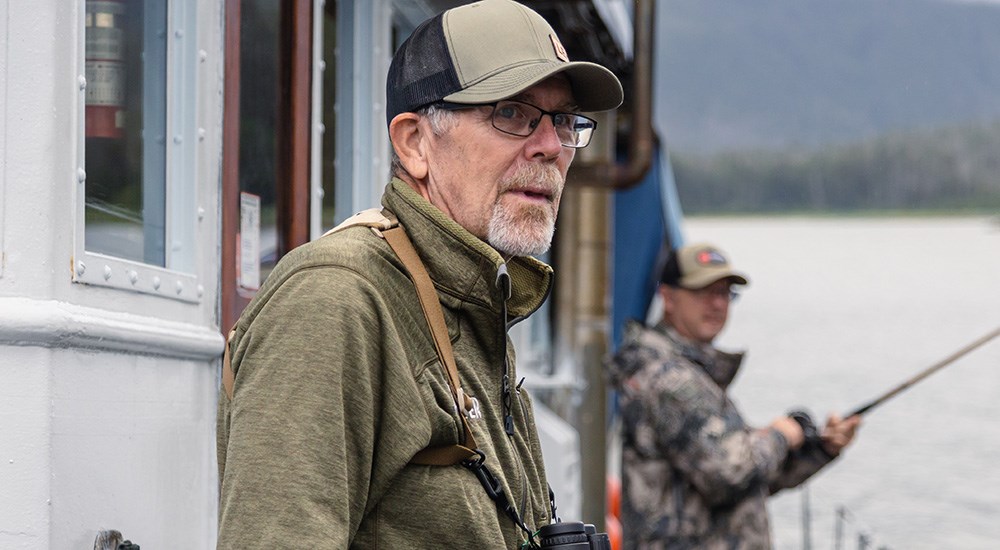
Since starting as a reader in the 1970s, author and former editor John Zent has been with AH for 40-plus years.
• Member stories also occupy valued spots in AH. Not the first to mine this vein, AH did it as big as any national magazine. In 1994, we bet that a monthly “Member’s Hunt” could ably fill the coveted back page. The startup proved challenging, but a quarter-century on we are blessed with a wealth of entries. Olmsted expanded the concept in 2007 with the “Members’ Best” gallery of hunt vignettes that’s claimed a chunk of the June issue ever since. Presently occupying eight pages, it’s a favorite of contributors, readers and editorial staff.
American Hunter’s Game Plan
A recent search of the archives led to a nugget I wish I’d seen 30 years ago. Expanding on what AH subscribers would find, one promo said, “Emphasis will be on the more common and frequents quests for American game … whitetail deer and pheasant most often, but almost everything else at times. We intend to cover hunting abroad, wherever American hunters go after game.” Bingo! Periodically editors must face criticism of subject matter that veers from mainstream favorites, particularly stories about overseas hunts. While some folks can’t get enough of a preferred topic, others have spoken up in favor of variety.
In retrospect, it’s great to know the magazine has remained true to original intent. Our name says it all: it’s about the American hunter as opposed to American hunting. In short, the mission is to reflect the broad interests of millions. That’s a juggling act that can’t happen in every issue or even over the course of any given year, but give dedicated staff a half-century and what a rich, diverse library they built.
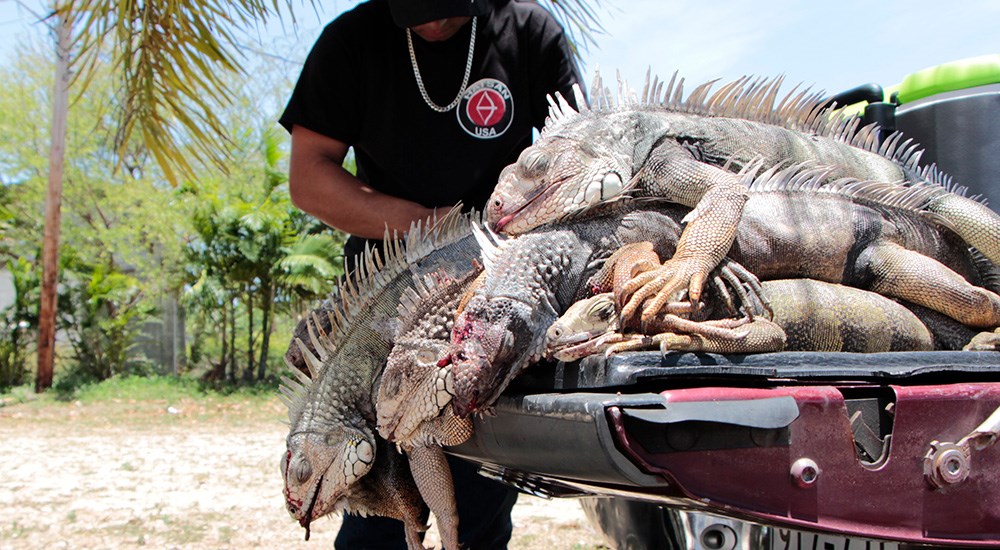
Principal stepstones include various game, tactics, gear and noteworthy hunters, which editorial planning translates to categories like “how-to, where-to, destination and adventure, history, conservation” and more. Deer articles lead the way, especially in how-to, but because AH readers are such avid DIYers, instructional content has extended to all manner of U.S. hunting. And since by nature we’re adventurers, there’s always been room for tales of extraordinary game, wild places and the lengths some go to in pursuit of self-imposed challenge. From early dispatches on Pacific walrus and elegant quail to bighorn sheep slams to March 2017’s three-parter on scaled critters (alligator, Puerto Rico iguanas and Potomac snakeheads with a bow), AH has crisscrossed North America. African hunting has been a driver too, just as it is for hunters obsessed with it and for those itching to go, as we balance adrenalized dangerous-game encounters with sound advice on booking a safari, rifles and travel. Not satisfied at that, accounts have appeared from every continent save Antarctica, from Greenland to New Zealand to public-land opportunities in nearly all 50 states. Let the editors know if we’ve missed one you’d like to read about.
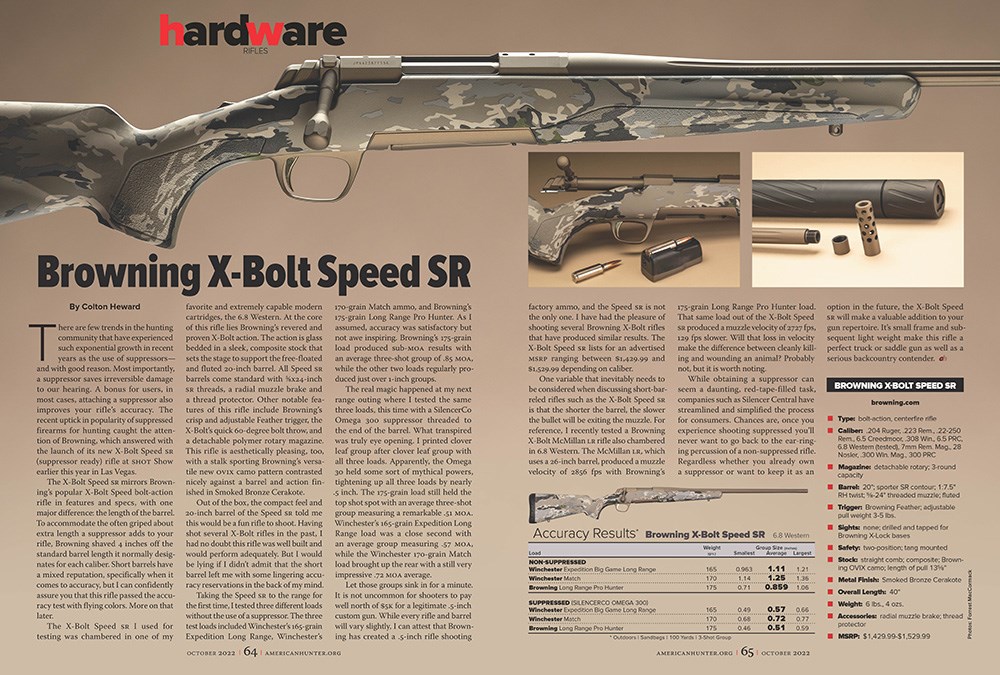
On top of that, the most prevalent topic since day one has been guns and shooting. Every one of AH’s 588 issues to date has included a gun column plus firearm-centered features along the way. Entitled “Hunting Guns” for many years, this material was reorganized in 2001 under the current “Hardware” banner. Recently, the focus on hunting rifles, shotguns and handguns has been widened to account for the personal-protection movement with coverage on carry and home defense guns. We know Hunter readers are fully engaged in this life-saving development. Providing factual, useful information about guns and shooting is one of NRA’s oldest and best-known missions, and this is how AH contributes.
With nearly 20 years and counting as editor-in-chief, Scott Olmsted has led the magazine longer than any of his predecessors. Nonetheless, his vision for AH’s future involves marked change. “There are fewer hunters afield nowadays and we will have to work hard to maintain our numbers. But hunters are increasingly passionate about their lifestyle—it separates them from the masses, and they know it. They also are increasingly tech-savvy, using social media and GIS hunting apps to access public land and engage with private landowners and each other. I can envision future AH coverage that is less one-way via print and the Web and instead relying on relationships built with hunters via devices ever-present in Americans’ hands: our smartphones.”
American Hunter Family Tree
During American Hunter’s lifespan, the proliferation of media forms has led to spin-offs of the original print magazine.

WEBSITE—AmericanHunter.org has been online since 2000. Updated with fresh postings every day, it echoes the magazine’s broad reach of subject matter while catering to U.S. hunters’ favorites in terms of game, guns, tactics, conservation, emerging opportunities and outdoor news and info. All that makes for brisk traffic from both dedicated followers and others searching for expert hunting and firearm information.
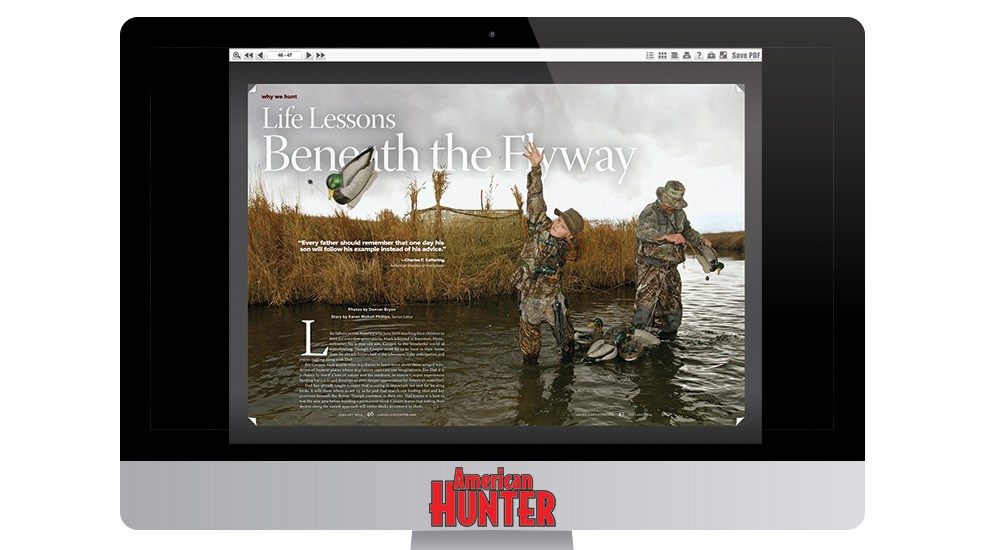
DIGITAL MAGAZINE—Members who choose American Hunter as their Official Journal can also opt to have it delivered in electronic form. Various formats were tried since its debut about 15 years ago before settling on the current version that is a replica of the print publication but does offer the convenience of live links to product sources, natural resource agencies and other URLs. AH digital is growing and recently eclipsed 100,000 circulation.
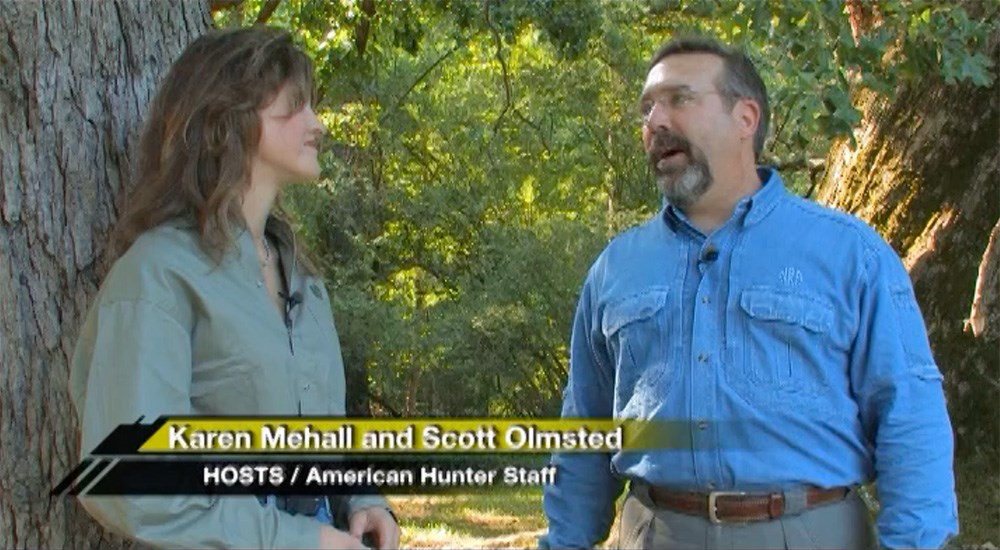
VIDEO—American Hunter TV was formerly presented as a weekly cable broadcast before the growing emphasis on the brand’s website convinced NRA Publications management to revamp the programming for online distribution. Currently posted weekly at americanhunter.org under the title “#SundayGunday,” the videos specialize in reviews of newly introduced firearms, ammunition, optics and related gear.
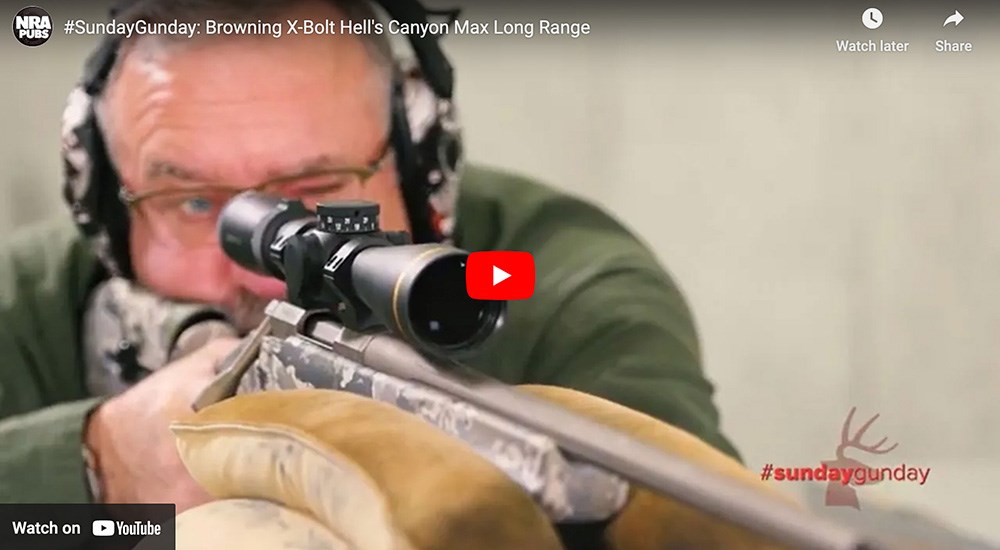
SOCIAL MEDIA—You can find NRA gun-rights alerts, as well as news, photos and other content on American Hunter Facebook, Instagram and YouTube channels.




































